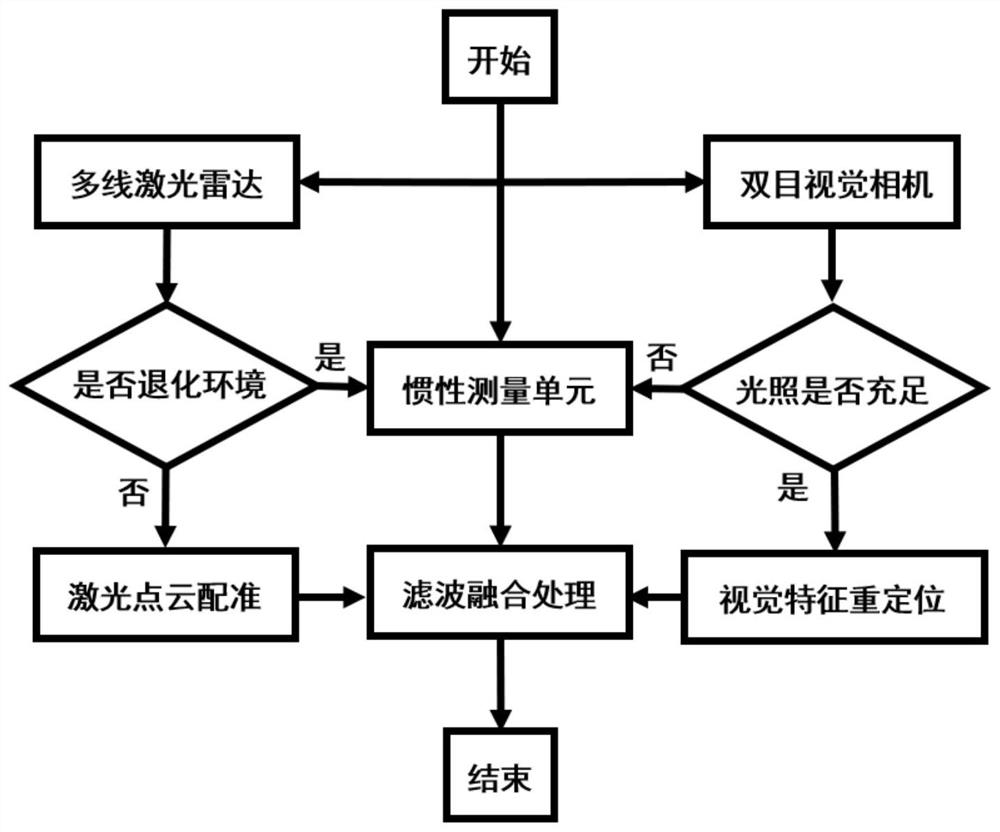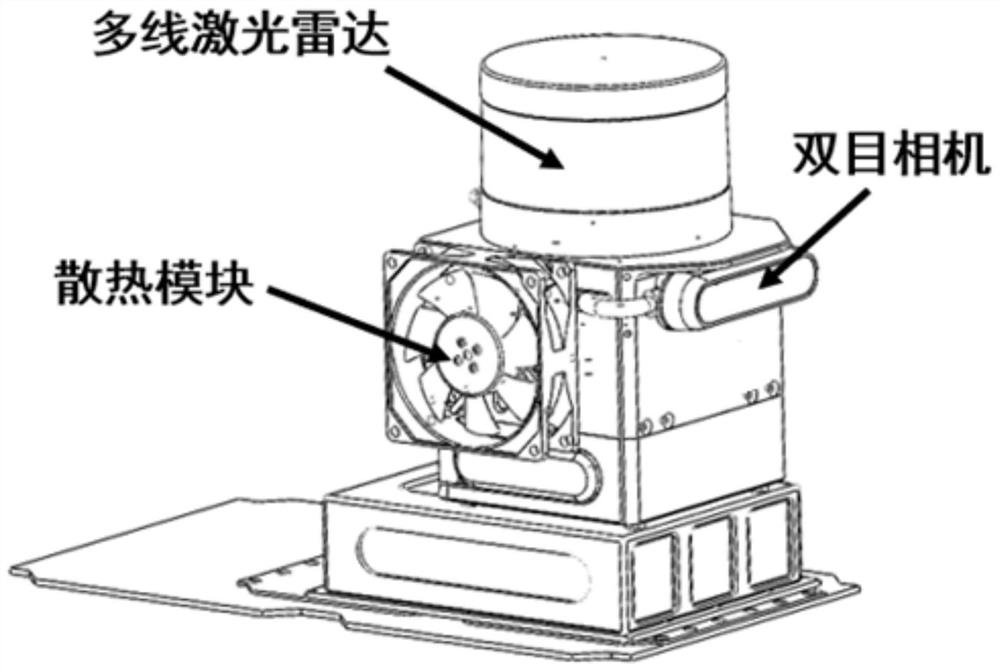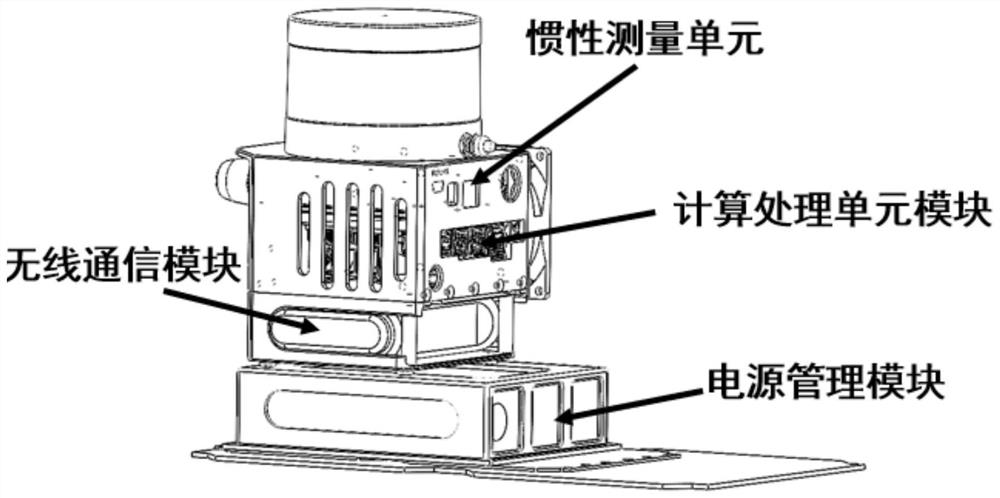Multi-source information fusion robot positioning method and system for unstructured environment
A technology of multi-source information fusion and robot positioning, which is applied in the direction of radio wave measurement systems, instruments, and utilization of re-radiation, etc., to ensure stable operation and achieve the effect of tight coupling
- Summary
- Abstract
- Description
- Claims
- Application Information
AI Technical Summary
Problems solved by technology
Method used
Image
Examples
Embodiment 1
[0041] like figure 1 As shown, the present invention provides a multi-source information fusion robot positioning method for unstructured environment, including:
[0042] Use the real-time laser point cloud emitted by the multi-line lidar and the constructed point cloud map to perform point cloud registration to calculate the current robot body pose information;
[0043] Use the binocular camera to obtain the image information of the current environment, extract the ORB visual feature points in each frame of the image to form a visual key frame, and relocate and match the current key frame and the built visual feature map to realize the current position information of the robot. Obtain;
[0044] At the same time, during the movement of the robot, the acceleration of the inertial measurement unit is integrated and processed to output the odometer information;
[0045]Based on the pose information obtained by the above three sensors, the real-time state of the robot is estimat...
Embodiment 2
[0060] This embodiment provides a multi-source information fusion robot positioning system for an unstructured environment, including:
[0061] The laser point cloud processing module is configured to: obtain the real-time laser point cloud emitted by the robot, perform point cloud registration with the preset point cloud map, and calculate the pose information of the current robot;
[0062] The image information processing module is configured to: obtain the image information of the current environment of the robot, extract the ORB visual feature points in each frame of the image to form a visual key frame, and relocate and match the current key frame and the preset visual feature map to obtain The current position information of the robot;
[0063] The acceleration processing module is configured to: obtain the acceleration of the robot, and obtain the odometer information by integrating;
[0064] The positioning information prediction module is configured to: filter the ob...
Embodiment 3
[0067] The present embodiment provides a control system based on a multi-source information fusion positioning robot in an unstructured environment, including:
[0068] The multi-line laser radar positioning module is configured to: emit a multi-line laser point cloud to scan the physical environment around the robot, perform registration and positioning based on the real-time laser point cloud and the existing environment point cloud map; use the laser to generate real-time point cloud information of the robot's surrounding environment , calculate the current robot pose information through the point cloud registration algorithm;
[0069] The binocular vision positioning module is configured to: obtain the real-time image data around the robot, and relocate it with the existing environmental visual feature point map; obtain the real-time image information in front of the robot, and use the image pixel information to extract the visual ORB feature points; According to the visua...
PUM
 Login to View More
Login to View More Abstract
Description
Claims
Application Information
 Login to View More
Login to View More - R&D
- Intellectual Property
- Life Sciences
- Materials
- Tech Scout
- Unparalleled Data Quality
- Higher Quality Content
- 60% Fewer Hallucinations
Browse by: Latest US Patents, China's latest patents, Technical Efficacy Thesaurus, Application Domain, Technology Topic, Popular Technical Reports.
© 2025 PatSnap. All rights reserved.Legal|Privacy policy|Modern Slavery Act Transparency Statement|Sitemap|About US| Contact US: help@patsnap.com



